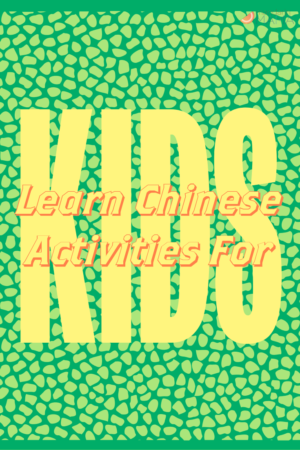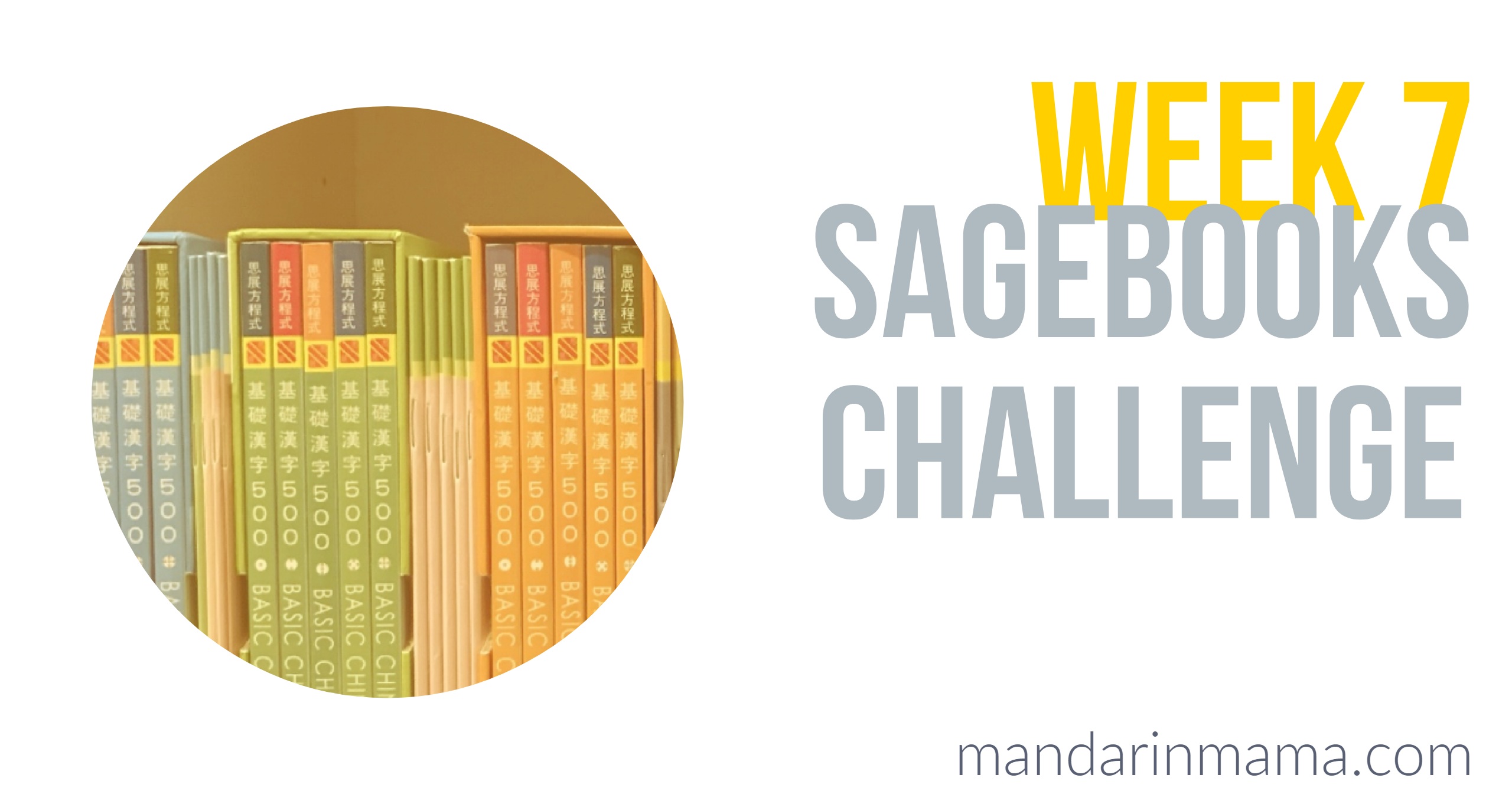
Updated as of: 3/15/2020 Note: For 18 months, I created activity posts for Sagebooks. I am no longer providing content for Sagebooks but I still admin their Facebook group.
For those of us whose schools are now closed because world events and would like to use the time to bolster our children’s Chinese, here are 43 activities to help teach your kids Chinese. Though I’m not normally an activity kind of blogger, I do hope you’ll find these games and most importantly – indoor and social distancing friendly activities – fun enough to try with your children. They’re all tested on my kids and perhaps your children will also like them.
43 Chinese activities Posts
1) Fun Matching and Memory Games to Help Remember Characters
This is the first in a series of posts about activities to make learning Chinese for kids fun and interesting. This one is a Chinese card matching game (and several alternate instructions) that will be familiar to most parents as well as really easy to do.
In honor of Chinese New Year, our activity this week is a play on the phrase, 年年有餘 (nián nián yŏu yú), which is an auspicious saying for the Lunar Year meaning, “May you have abundance year after year.” This week, we’ll be fishing for characters and as with all our activities and crafts, we provide alternate instructions which you can make easier or harder.
3) 去釣魚&抽烏龜 Go Fish and Old Maid
This week to make learning Chinese for kids fun, we’ll again be playing two games that our parents might find familiar: Go Fish and Old Maid. You can even re-use the fish cards you made for the Fishing Game last week! As with all our activities and crafts, we provide alternate instructions which you can make easier or harder.
This week, our fun Chinese learning activity will require a lot of room! Your kids get to work on their arm and throwing precision, and you can trick your child into recognizing characters. The best part? There are infinite variations to this game.
5) Using Salt to Teach Your Child How to Write
This week, we’re focusing on writing characters. As you have probably experienced either yourself or seen it happen with your children, writing characters repeatedly on worksheets have a limited value and children often balk at the work. Hopefully, your kids will find writing in SALT a lot more interesting!
6) Help Your Child Write Characters by Using Fun Materials
This week’s activity is about writing characters again. Instead of a kinesthetic activity, we’ll be using different textures and materials.
7) Help Your Child Form Characters with Playdough
Just like the last few weeks, this activity focuses on writing characters and getting your child used to forming the characters they’re learning. Instead of writing or using stickers and materials to put on top of characters, we’ll be MAKING them!
This week, we use puzzles to help our children recognize how a character is formed and get used to seeing the same character repeatedly. Originally, I was going to do a coloring activity – but my children found it super boring so puzzles it was!
9) Making Phrases and Sentences with Characters
This week, the activity is to make simple phrases or sentences with the characters your child already knows. It is geared more towards older children, but your younger child can still participate. Remember to have age-appropriate expectations for your child so you don’t get frustrated at things they’re not developmentally ready to do.
This week, the activity helps with your child’s observational skills as well as their memory. The difficulty level of the activities we feature often can be adjusted depending on the age and abilities of your child. The point is to make it just hard enough that your child finds it challenging, but not so hard your child doesn’t want to play.
This week, we’re back to matching characters. For younger children, matching is a helpful way to learn characters. Matching characters to pictures is also a wonderful way to learn, too.
We adapted today’s game to help with Chinese character recognition by using popsicle sticks or sturdier cards. Because our Chinese Domino game is geared more for older children, if your child is having a hard time following the rules, you may want to adapt the game to be more of a matching game instead of actual dominoes. (Side note: Did you know that the Chinese invented dominoes?)
13) Guessing Traced Characters Activity
This week, the activity might cause a lot of giggles for children who are ticklish. Hopefully, they will have a good time and remember Chinese characters, too.
14) Hiding characters in drawings
This week, your children will be “hiding” characters in their drawings. Whether they choose to make the picture the actual character or they draw a scene and hide the characters within the picture is up to them. The best part is when your kids ask the grown up (or other kids) to find the hidden characters.
This week, you will be slowly revealing a hidden flashcard and seeing how quickly your child can guess the character correctly (or in the case of multiple players, who can guess the character first). This activity helps children use unique details and markers to figure out what character is being unveiled and will ultimately, solidify the character in their memory.
16) 接龍 / Jie Long Connecting Dragon Activity
This week, your children will literally connect characters to make multiple words and phrases as their brain makes connections regarding how the same character can be used in different situations. If your children are younger or do not have a huge Chinese vocabulary, you can as make as many phrases with a particular character instead of following the jie long method.
This week, your children will have to follow your hands closely as they try to find the character card. The best part about this activity is that you can use different props (or none at all) and the game will seem like something entirely new!
18) Character Stroke Guessing Game
This week’s activity is similar to our slow character reveal activity except instead of using a flashcard and covering it up, we will be writing the character down. We’ll be testing how quickly your child can guess the character we are writing since it requires your child to understand stroke order and recognizing the possibility that multiple characters start out the same way.
19) Painting Over Washi Tape Activity
This week’s activity is a lot of fun for kids because it’s kind of like magic. (Ok, not really. But it’s still a really cool effect.) We’ll be having your child “write” a character using washi tape and then coloring over the tape with crayons, pencils, or paints. When they remove the tape, the character will still be there! MAGIC!
20) Decorating Glue Characters
We’ll be having your child “write” a character using glue and then decorating the glue with all manner of things. They can even color/paint over the clear dried glue! I know. It’s a messy craft but I have found my children LOVE messy crafts – especially those that involve dumping out ALL my white glue. If you don’t want to end up with crunchy carpets, I recommend doing this on a tiled or hard floor that is easy to clean. Or outside.
21) Marshmallow and Toothpick Activity
We’ll be having your child form Chinese characters using marshmallows (or clay or playdough) and toothpicks. If you use marshmallows, you can even eat your finished product! It may be a lot easier for older children so for your younger kids, you may have to stick to very easy characters or be prepared to be very hands-on.
We’re back this week with another Chinese character learning activity and it capitalizes on the love many children have for Legos. As it always is with our character “writing” activities, this will be much easier for older children. For your younger kids, you will either have to provide an example or simple characters for them to copy.
23) Component Matching Activity
This week, we’ll be helping your children closely examine Chinese characters and the commonalities between similar characters. The activity is to help build observational skills, teach components and radicals, and help your kid understand the logic behind the building blocks of characters. Ultimately, this will help your child identify unique characteristics as well as help with their character recognition.
This week, we’ll be removing one of your child’s senses to see if they can still write characters. Mostly, this is just a fun way to trick your kids into writing – and also test their siblings or friends’ reading. Your child will be writing characters blindfolded and guessing characters other people write while blindfolded. You can also use this as a way to teach new characters and have it be a fun way to test their memory.
25) Charades Break
This week’s activity is an old favorite of many parties: charades! Now, despite the fact that charades is mostly a physical acting activity, the actual choosing and reading of the character cards they will be doing is helping children practice reading.
26) Fun Ways to practice Chinese Classifiers
Teaching your children proper Chinese grammar is a vital part of Chinese fluency. However, teaching children grammar doesn’t have to be tedious or boring. Today’s activities will focus on classifiers which count nouns, because it is a very simple way to make your children sound more like native speakers.
27) Top 5 Activities
As a busy parent, you might not have been able to try the 20+ games and activities we featured on our blog in 2018. For your convenience, we compiled a list of our Top 5 Activities of the year.
28) Teaching Chinese Parts of Speech
This week, we will help our children learn about the different parts of speech such as nouns (名詞/míng cí/), verbs (動詞/dòng cí/), and adjectives (形容詞/xíng róng cí/). If you’re feeling ambitious, you can also teach adverbs (副詞/fù cí/), prepositions (介詞/jiè cí/) and the rest of the 8 parts of speech.
29) 4 Fun Ways to Classical Chinese Poetry
This week, we will be helping our children learn about the structure of some classical Chinese poems, the concept of rhyming, and the idea of painting images with words.
30) Modern Chinese Poetry for Children
In this post, we will be focusing on modern Chinese poetry and included some fun ways to teach our children poetry that doesn’t directly involve memorization.
This week, we will be doing a few activities to remind our kids that failure and making mistakes is part of the normal learning process. With these activities, we hope to reinforce the idea of the impermanence of our “mistakes” as we “fail forward” towards success.
With these activities, we hope to provide some examples of how to introduce idioms to your children, as well as help them remember the actual idioms (if not the meaning).
33) Fun Games to Tackle Radicals
Learning about radicals may seem like a hard or boring activity. However, if we could treat it like looking for clues in a scavenger hunt or treasure map, it will be a lot more fun for our children. Here are two fun games for you to try with your children.
Most of these activities focus on matching and locating the radicals within a character. Hopefully, your younger children will have so much fun that they won’t notice learning anything.
In spoken Chinese, there is no differentiation between pronouns of any type. Regardless of gender, species, or even objects, they all sound the same. Your children will learn about the differences between male/female, objects, animals, and deities. Also, it’s a very easy way to teach kids the differences in radicals and see how obviously they apply to each pronoun.
36) A Study of “de” 「的/ 得/ 地」的練習
One of the hardest grammar concepts – even for native speakers, is when to use 的 / 地 / 得 as modifiers. When spoken, they all sound the same in some situations, and very similar in the others. In writing, they each have different uses. Understandably, it can get really confusing! Here are a few activities to help your children learn when to use which modifier.
37) The Fun of 疊詞
Most of these activities are geared towards teaching children some common 疊詞 to help them start building their vocabulary.
38) The Many Faces of 破音字 (Homographs)
When teaching children how to read Chinese, it is inevitable we run into the concept of 破音字, aka多音字 (homographs). A good understanding of 破音字 is important when your child starts to write in Chinese. It helps them to avoid falling into the trap of using a homophone which has a different meaning. Below are some activities to help your children to grasp the concept of 破音字.
39) 4 Fun Language Games Using Comics
The activities in this post are based off comics and the way this medium tells stories. Most of these activities are geared towards combining art, sequential time, and story for the purpose of teaching children Chinese vocabulary, and more importantly, encouraging them to make use of what they have learnt.
40) Tell Me a Story… Games to Step Up Kids’ Chinese
As we mentioned in a previous post, you can use the art of storytelling to help your children learn vocabulary as well boost comprehension. The activities in this post are going to require your children to use many different types of skills, too. You may even find them similar in concept to the activities we created for the comics.
41) Storytelling Activities to Boost Chinese Ability
This week, we will be using different aspects of storytelling to help kids with their observational skills about life, people, and their surroundings. You can also tie these activities in with our previous article about using observation skills.
In this post, we are going to share some activities that will teach your children some basic and slightly more complex emotions. Most of these activities are for younger children. If your child is older but doesn’t know the Chinese terms for emotions, they should pick them up fairly quickly.
43) Advanced Games to Learn Emotions
In a previous post, we focused on activities that were more appropriate for younger children or new Chinese learners. This post will focus on a little more advanced Chinese because we will be integrating all the skills we have been using in previous activities such as storytelling, drawing, and writing.







